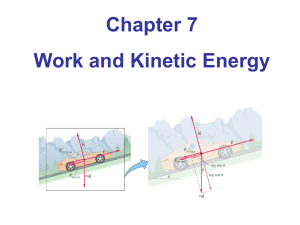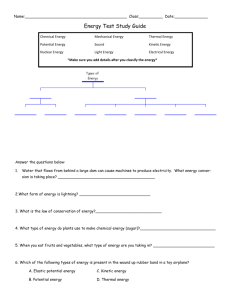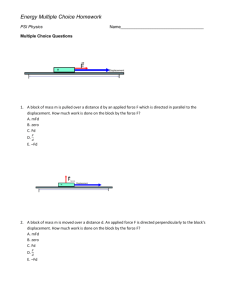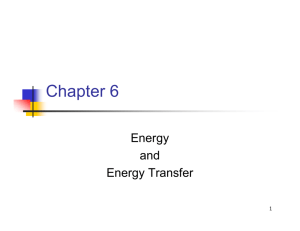Positive and Negative Work ааааааааааааааа(Page 233
advertisement
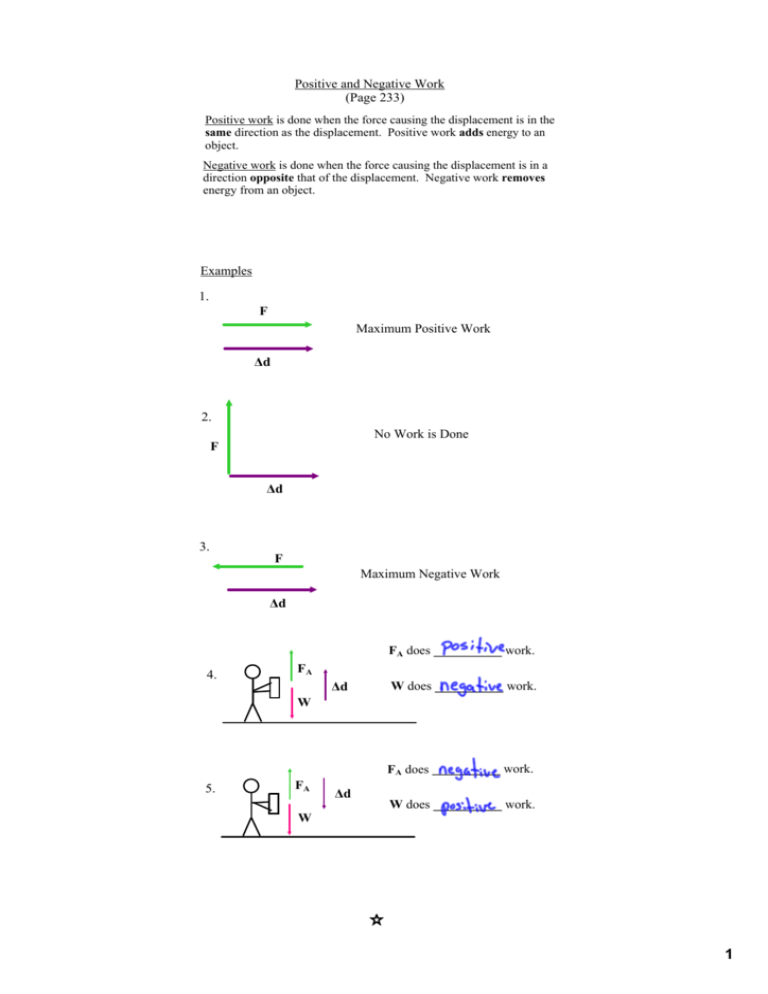
Positive and Negative Work (Page 233) Positive work is done when the force causing the displacement is in the same direction as the displacement. Positive work adds energy to an object. Negative work is done when the force causing the displacement is in a direction opposite that of the displacement. Negative work removes energy from an object. Examples 1. F Maximum Positive Work Δd 2. No Work is Done F Δd 3. F Maximum Negative Work Δd FA does __________ work. 4. FA Δd W does __________ work. W FA does __________ work. 5. FA Δd W does __________ work. W 1 Lifting Lowering W = Fd W = (6.50 x 102 N)(0.55 m) W = 3.2 x 102 J W = Fd W = (6.50 x 102 N)(0.55 m) W = 3.2 x 102 J F Δd W = 3.2 x 102 J F Δd W = ­ 3.2 x 102 J 2 3 Kinetic Energy (Page 236) Reminder: Kinetic energy is energy due to motion. Check Units Ek = 1mv2 2 Ek ­> kinetic energy (J) m ­> mass (kg) v ­> velocity (m/s) NOTE: When velocity is squared, it is no longer a vector so no vector notation is used in the kinetic energy equation. 4 Work­Kinetic Energy Theorem (Page 239) The special relationship between doing work on an object and the resulting kinetic energy of the object is given by the work­ kinetic energy theorem. Assumptions: ­ all work done on a system gives the system only kinetic energy ­ a constant force gives the system a constant acceleration ­ directions of force and displacement are parallel ­ the object moves in a straight line W = Fd W = (ma)d W = m vf ­ vi d t Note: d = 1(vf + vi) t 2 W = m (vf ­ vi) 1(vf + vi)t t 2 W = 1m (vf ­ vi)(vf + vi) 2 W = 1m (vf2 ­ vi2) 2 W = 1mvf2 ­ 1mvi2 2 2 W = Ekf ­ Eki W = ΔEk also Fd = ΔEk The equation describes how doing work on an object can change the object's kinetic energy. 5 a) 60 J b) +6.9 m/s 3.4 x 103 J 6 7





